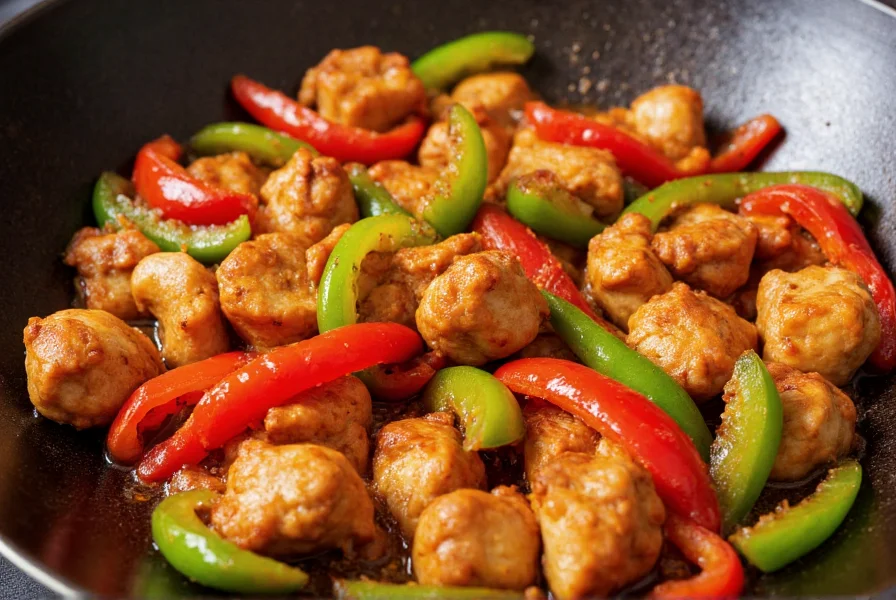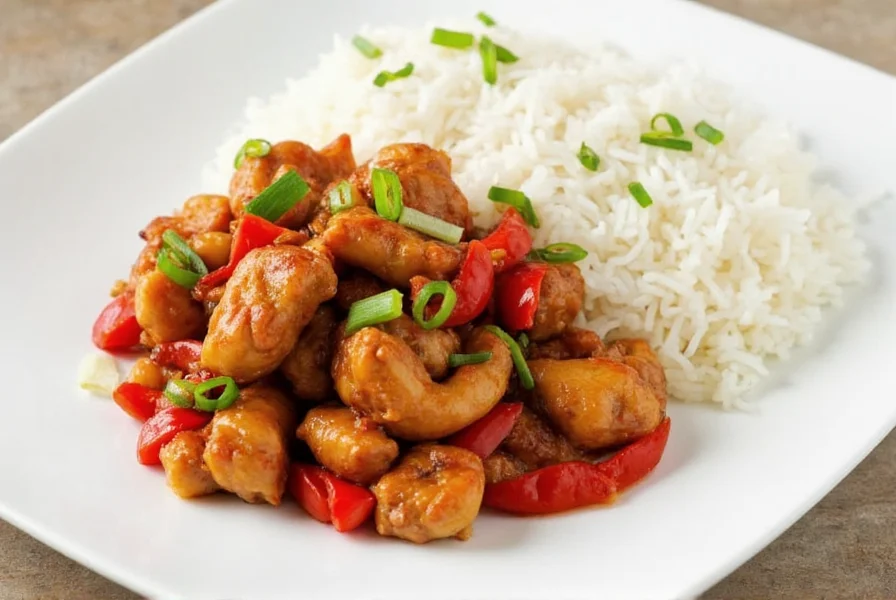Pepper chicken stands as one of the most accessible yet satisfying dishes in Asian-inspired cooking. This versatile recipe bridges culinary traditions from Sichuan province to modern fusion kitchens, offering home cooks a reliable weeknight dinner option that delivers restaurant-quality results. The magic happens through precise heat control and timing—critical elements that transform simple ingredients into a harmonious dish where neither the chicken nor vegetables overcook.
Understanding Pepper Chicken Essentials
At its core, pepper chicken showcases the Chinese cooking principle of wok hei—the "breath of the wok" that infuses food with distinctive smoky flavor through high-heat stir-frying. While Western adaptations sometimes include additional ingredients like broccoli or carrots, purists maintain that authentic pepper chicken features only bell peppers (traditionally green, but modern versions incorporate red, yellow, and orange varieties for visual appeal and subtle flavor differences).

Key Ingredients and Their Roles
The success of your pepper chicken depends on understanding each component's purpose. Chicken breast provides lean protein but requires careful cooking to prevent toughness, while thigh meat offers more forgiving texture with richer flavor. Bell peppers contribute not just color but varying sweetness levels—green peppers deliver sharper notes, while red and yellow varieties add natural sugars that caramelize beautifully during stir-frying.
| Ingredient | Function | Substitution Options |
|---|---|---|
| Chicken thigh | Rich flavor, stays moist during high-heat cooking | Chicken breast (cut uniformly), firm tofu for vegetarian |
| Fresh bell peppers | Texture contrast, color variety, natural sweetness | Zucchini, snap peas (different flavor profile) |
| Shaoxing wine | Depth of flavor, removes meaty odors | Dry sherry, rice vinegar + water (1:1) |
| Dark soy sauce | Color development, complex umami | Regular soy sauce + pinch of sugar |
Step-by-Step Preparation Guide
Mastering pepper chicken requires attention to three critical phases: ingredient preparation, cooking sequence, and sauce integration. Begin by cutting chicken into uniform 1-inch cubes—consistency prevents uneven cooking. Toss with 1 tablespoon cornstarch, 1 teaspoon Shaoxing wine, and ½ teaspoon sesame oil. This coating locks in moisture while creating the signature glossy finish.
Heat your wok or skillet over maximum heat until smoking slightly, then add 2 tablespoons peanut oil. Cook chicken in a single layer without stirring for 90 seconds to develop fond (those delicious browned bits), then flip and cook another 60 seconds until 70% cooked. Remove immediately—residual heat will finish cooking during后续 steps. This technique prevents the common mistake of overcooked, rubbery chicken.
Perfecting the Sauce and Timing
The sauce composition makes or breaks authentic pepper chicken. Combine 3 tablespoons chicken broth, 2 tablespoons light soy sauce, 1 tablespoon rice vinegar, 1 teaspoon sugar, and ½ teaspoon cornstarch in a bowl. The critical ratio is 3:2:1 for liquid to soy to acid—adjust based on your ingredients' saltiness.
When stir-frying vegetables, add them in sequence based on density: onions first (30 seconds), then bell peppers (90 seconds), followed by minced garlic and ginger (15 seconds). Return chicken to the pan, pour sauce over everything, and toss constantly for 45-60 seconds until the sauce thickens and coats each ingredient. Over-saucing drowns the dish—aim for a light glaze rather than pooling liquid.

Variations for Different Dietary Needs
Pepper chicken adapts beautifully to various dietary requirements without sacrificing flavor. For gluten-free versions, substitute tamari for soy sauce and ensure your Shaoxing wine is certified gluten-free. Keto enthusiasts can reduce sugar to ¼ teaspoon and increase healthy fats with avocado oil. Vegetarian adaptations work well with extra-firm tofu or seitan, though cooking times decrease to 2-3 minutes total.
Sichuan-style pepper chicken introduces mouth-numbing Sichuan peppercorns (1 teaspoon toasted and ground) and dried chilies for authentic regional flavor. Indo-Chinese versions often include additional spices like cumin and garam masala, reflecting the dish's evolution in Indian Chinese restaurants.
Troubleshooting Common Issues
Even experienced cooks encounter challenges with pepper chicken. If your sauce separates, the wok wasn't hot enough when adding liquid—next time, let vegetables develop slight char before introducing sauce. For soggy vegetables, you've overcrowded the pan; cook in batches if necessary. Chicken sticking to the pan indicates insufficient preheating—properly seasoned carbon steel or cast iron should release food easily at correct temperatures.
Storage considerations matter for meal preppers: pepper chicken keeps refrigerated for 3 days but loses vegetable crispness upon reheating. Freeze portions without sauce for up to 2 months, adding fresh sauce when reheating. The dish reheats best in a skillet over medium heat rather than microwave to maintain texture.
Frequently Asked Questions
What's the difference between pepper chicken and chicken stir-fry?
Pepper chicken specifically features bell peppers as the primary vegetable with a balanced savory-sweet sauce, while general chicken stir-fry may include various vegetables and sauce profiles. Authentic pepper chicken maintains a 3:2:1 sauce ratio and focuses on wok hei development.
Can I use frozen bell peppers for pepper chicken?
Fresh bell peppers work best for proper texture, but frozen can be used in a pinch. Thaw completely and pat dry to remove excess moisture, which causes steaming instead of stir-frying. Expect slightly softer texture and reduced color vibrancy compared to fresh peppers.
Why does my pepper chicken sauce turn out watery?
Watery sauce typically results from insufficient cornstarch, overcrowded pan causing steaming instead of frying, or adding cold sauce to a cool wok. Use the recommended ½ teaspoon cornstarch per serving and ensure your wok is properly preheated before adding sauce mixture.
How can I make pepper chicken spicier without changing the flavor profile?
Add 1-2 thinly sliced fresh red chilies during the garlic and ginger step, or include ½ teaspoon chili garlic sauce in your sauce mixture. For authentic heat, use ¼ teaspoon Sichuan peppercorn powder which provides tingling sensation without overwhelming spice.











 浙公网安备
33010002000092号
浙公网安备
33010002000092号 浙B2-20120091-4
浙B2-20120091-4